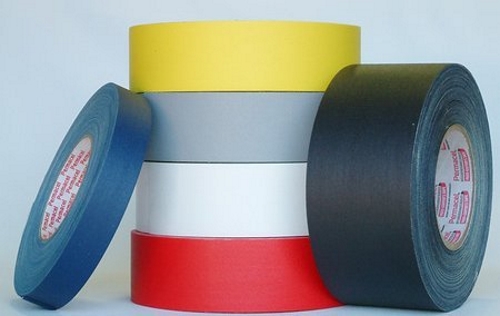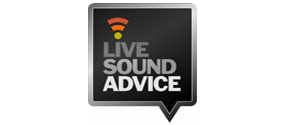Consider tape. It’s something used nearly every day, but usually not thought of until the empty roll mocks you.
We’re not speaking about audio recording tape here (may it rest in peace), but rather different types of adhesive tapes that can help you conduct your services safer and easier.
There are at least three kinds of tape that can and should be used in a church sound system: electrical tape, gaffers tape, and console tape. Here’s what they are, how to use them properly and where to purchase these helpful supplies.
Electrical Tape
Also known as E-Tape or PVC Tape among sound technicians, this is the only type of tape that should be used on electrical connections. Slightly stretchy and available in a rainbow of colors, it’s often used to semi-permanently mark things like mic stands and microphones so they don’t “walk away” after a guest performance.
Mark all your mics and stands with a wrap of colored Electrical Tape near the bottom with your church’s initials written in Sharpie (indelible marker). That way any visiting sound crew will see your “mark” and not mistakenly appropriate them.
Find electrical tape at most hardware, home supply, and electrical supply stores.
Gaffers Tape
Also known as Gaff Tape or just “Gaff” among friends, it’s used for everything from holding down cables on the floor to reassembling gear that’s lost a few screws on the road. Gaff Tape is traditionally colored black, sized 2 inches wide for most stage work and has a fabric backing for strength. It also has a special type of adhesive that won’t leave a residue behind, even after months of attachment to a cable or mixing board.
Don’t be tempted to use Gaff to hang a lighting instrument or loudspeaker above your head, as given the right circumstance it will tear. A monitor loudspeaker falling even a few feet will injure or kill anyone it falls on, so always mount ceiling speakers and lights with the proper cables and flying hardware.
Don’t confuse Gaff with its evil twin, Duct Tape. Duct Tape (or Duck Tape) is the gray or black stuff designed to hold duct pipes together, hence the name, and it can leave the worst type of goo behind after you remove it from a cable or DI box after just a few weeks. Yes, Gaff is twice the price of Duct, but well worth every penny. You can find it at pro AV supply stores such as Markertek.
Console Tape
Also called Board Tape, this is traditionally colored white with a paper base available in 1/2-inch or 3/4-inch widths. The reason it’s called console tape is that it’s often used to run down the front edge of the console below the faders, allowing you to mark each input with a Sharpie as to its function.
On a side note, the roadie standard markings for drum kit mics are K, S, H, R1, R2, F1, F2, OH-L, OH-R, and Toys (this stands for the mics on Kick, Snare, High Hat, Rack Tom – small, Rack Tom – large, Floor Tom – small, Floor Tom – large, Overhead Left, Overhead Right and chimes, cowbells, etc.).
Guitars are typically labeled as E-Guit for Electric Guitars and A-Guit for Acoustic Guitars. Voices are usually labeled V1, V2, V3, V4, etc… from left to right on the console corresponding with the stage position while looking at them from the audience.
Avoid using proper names such as Ed or Sally, simply because a guest engineer probably won’t know who Ed or Sally is, but will always recognize POD for “podium” or E-Guitar as the Stratocaster guitar playing through the Fender Twin amplifier. Of course, REV for your reverend or preacher would work as well.
The nice thing about console tape is that the adhesive won’t leave a residue behind on your mixing console, even after a year of being in place. Try that with plain old masking tape and you’ll have a dried-on mess that will resist all efforts to remove it.
It is available at pro AV supply stores – as well as art supply stores as drafting tape. You can also use painter’s tape from your hardware store in a pinch. This light purple/blue tape has removable adhesive for masking around windows and will take marking with a Sharpie marker, but it’s not as legible in dim light as white console tape.
















